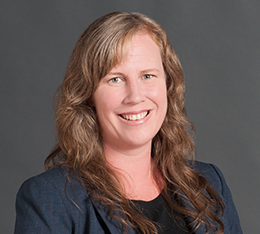Lost in the sound and fury of the national election are the results of four statewide ballot initiatives that aimed to bolster financing of the Medi-Cal program. Medi-Cal is California’s version of Medicaid, which pays for the health care of low-income families, many elderly who live in nursing homes, and—with the passage of the Affordable Care Act—single low-income adults. The state spends nearly $19 billion annually from the General Fund (and $87 billion from all sources) to provide medical coverage for 13.5 million Californians through Medi-Cal.
Three of the four initiatives passed on November 8, providing up to $3 billion in additional funds for Medi-Cal each year. But it will take a while for Californians to see the concrete outcomes of their votes. And, as is often the case with initiatives, the impact of these measures will depend on questions that have yet to be answered. The three measures that passed include:
- Proposition 52: This initiative permanently extends the fees hospitals pay to the state, which the state then uses to get federal matching funds to support Medi-Cal. This translates to about $1 billion in state General Fund savings annually – providing this system continues to be allowed under federal law. There wasn’t much doubt that the state would seek to extend these fees past the sunset date of January 1, 2018, since they reduce pressure on the General Fund. But the initiative makes it more difficult for the legislature to modify the hospital fee program.
- Proposition 55: Extending the tax on high-income earners will generate between $4 billion and $9 billion each year to pay for K–12 education and community colleges, Medi-Cal, and other budget priorities. For Medi-Cal, this is expected to provide up to $2 billion annually starting in 2018. But the amount may vary significantly from year to year for several reasons. First, K–12 education gets first call on the new revenue. In addition, the amount of new revenue will be affected by the volatility in what high-income taxpayers earn. Thus, the governor and legislature will have to learn to cope with an undependable funding source for Medi-Cal.
- Proposition 56: Higher tobacco taxes will generate up to $1 billion for Medi-Cal in 2017–18. Revenue from tobacco taxes has generally fallen each year as the number of smokers in California has declined, and the new tax may accelerate that trend. While building these funds into the Medi-Cal budget may strengthen the program now, the state’s General Fund could face increasing pressure in the future if this source of funding declines. The state legislature and governor will determine how to use these funds as part of budget discussions next spring.
The fourth initiative affecting the Medi-Cal program, Proposition 61, failed to garner a majority of votes. Perhaps not surprisingly, more questions were raised about the impact of this initiative than the other three. Proposition 61 prohibited the state from paying more for prescription drugs than the federal US Department of Veterans Affairs, which typically pays the lowest prices of any public or private entity. The measure’s intent was to reduce the cost of prescription drugs in California, but the fiscal analysis by the Legislative Analyst’s Office suggested that the savings were uncertain.
While the new funds for Medi-Cal will be welcome, it remains to be seen whether they will provide reliable support for the program. Plus, there are questions about how the new president and Congress will alter the Affordable Care Act and how that will affect the state’s program. For instance, the law allowed California to extend Medi-Cal coverage to single low-income adults. In the 2016–17 state budget, coverage for this group cost about $15 billion annually, with the federal government picking up 95% of the tab. If the federal government significantly reduces or eliminates this enhanced funding rate, the $3 billion in new revenues generated by the three initiatives will not be enough to operate California’s expanded Medi-Cal program without other fiscal support.



